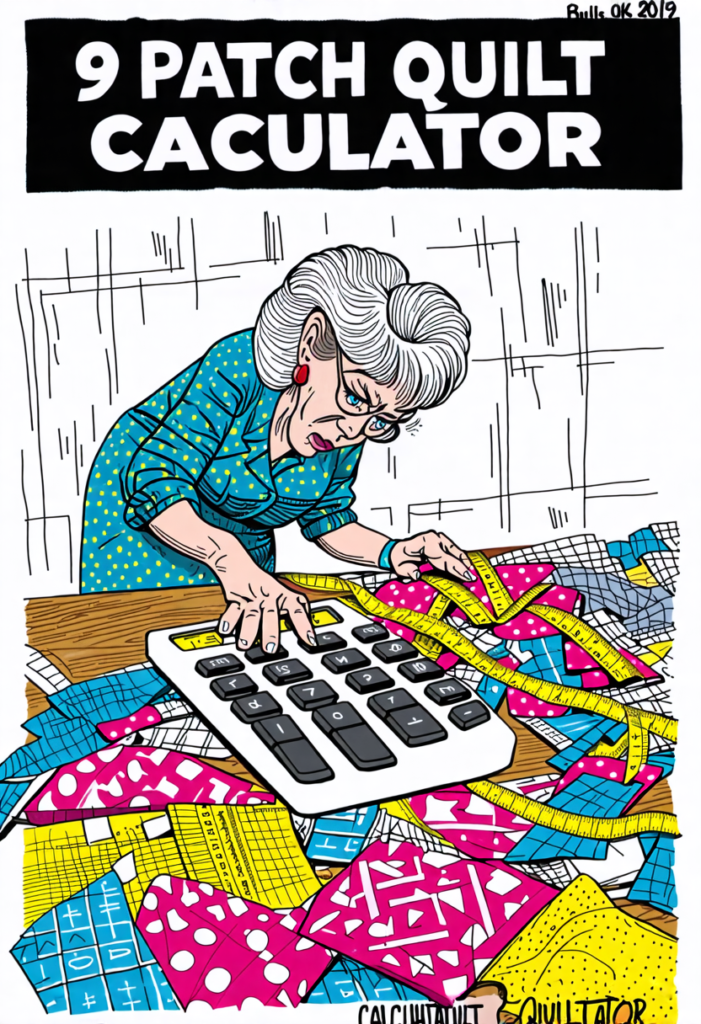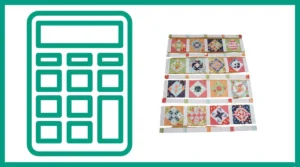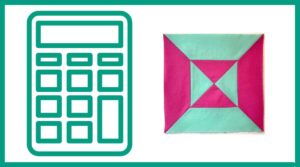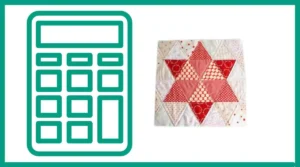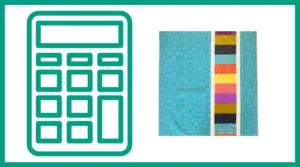9 Patch Quilt Calculator
The 9 Patch Quilt Calculator is a user-friendly online tool designed to help quilters of all skill levels determine the precise measurements needed for their 9 patch quilt blocks. By inputting the desired finished block size, this calculator provides instant results for cutting squares, half-square triangles (HSTs), and stem units – three essential components in many 9 patch quilt designs.
How the 9 Patch Quilt Calculator Works
The functionality of the 9 Patch Quilt Calculator is straightforward and efficient. Here’s a step-by-step breakdown of how to use this valuable tool:
- Input the finished block size: Enter the desired size of your completed 9 patch block in inches. This is the size your block will be once it’s sewn into your quilt.
- Click the “Calculate Sizes” button: After entering your block size, simply click this button to generate your results.
- View the results: The calculator will display three key measurements:
- Cut size for squares
- Cut size for HST starting squares
- Cut size for stem unit width
These measurements are crucial for preparing your fabric pieces accurately, ensuring that your finished block comes together perfectly and matches your intended size.
Understanding the Calculations
To fully appreciate the value of the 9 Patch Quilt Calculator, it’s important to understand the math behind its calculations. Let’s break down each measurement:
Cut Size for Squares
The calculator determines this by dividing your finished block size by 3 (since a 9 patch block is 3 units by 3 units) and then adding a 1/2 inch seam allowance. This extra half-inch accounts for the standard 1/4 inch seam allowance on all sides of the square.
Cut Size for HST Starting Squares
Half-square triangles (HSTs) are a common element in many quilt designs. The calculator provides the size for the starting squares needed to create HSTs. It calculates this by taking the size of a single unit in the 9 patch (finished block size divided by 3) and adding 1 inch. This extra inch allows for seam allowances and the slight loss of fabric that occurs when creating HSTs.
Cut Size for Stem Unit Width
Stem units, often used in floral or vine designs within quilt blocks, require a specific width calculation. The calculator determines this by multiplying the single unit size (finished block size divided by 3) by 2, and then dividing the result by 4. This calculation ensures that your stem units will fit properly within the 9 patch structure.
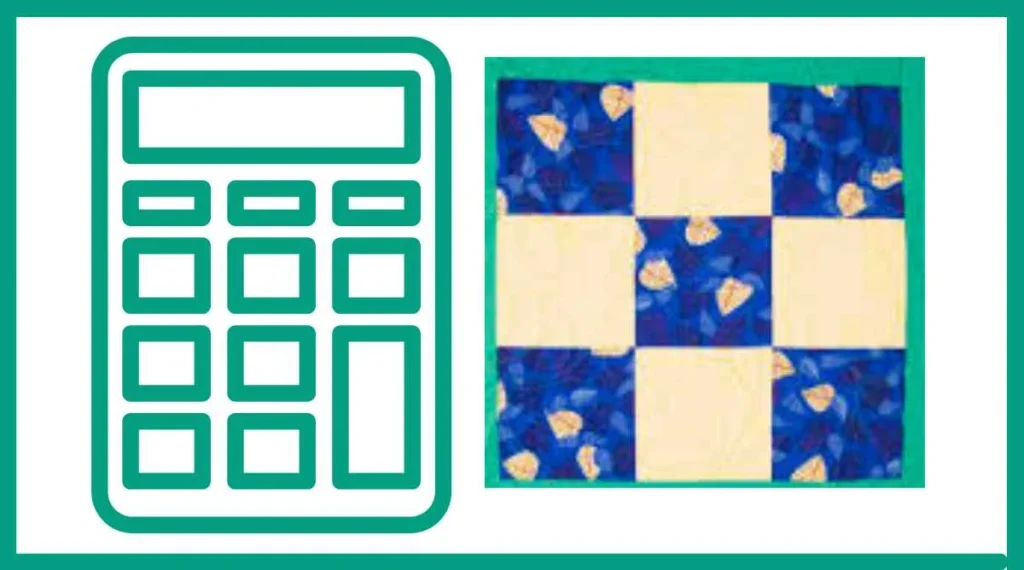
Benefits of Using the 9 Patch Quilt Calculator
Incorporating the 9 Patch Quilt Calculator into your quilting workflow offers several advantages:
- Time-saving: Instead of manually calculating measurements or consulting complex charts, you can get instant, accurate results with just a few clicks.
- Increased accuracy: By eliminating human error in calculations, you reduce the risk of cutting fabric incorrectly, saving both time and material.
- Flexibility: Whether you’re working on a small wall hanging or a king-size quilt, the calculator adapts to any block size you input.
- Confidence boost: For beginners, having a reliable tool to confirm measurements can provide the confidence needed to tackle more complex projects.
- Resource efficiency: Accurate cutting means less fabric waste, helping you make the most of your quilting materials.
Practical Applications of the 9 Patch Quilt Calculator
To illustrate the practical use of this tool, let’s consider two examples:
Example 1: Traditional 9 Patch Quilt
Suppose you’re creating a traditional 9 patch quilt with a finished block size of 12 inches. Using the calculator, you’d input 12 into the “Enter finished block size” field and click “Calculate Sizes.” The results would be:
- Cut size for squares: 4.5 inches
- Cut size for HST starting squares: 5 inches
- Cut size for stem unit width: 2 inches
With these measurements, you can confidently cut your fabric, knowing that once sewn, your blocks will come together to form perfect 12-inch finished 9 patch blocks.
Example 2: Modern Mini Quilt
For a modern mini quilt project, you might want to work with smaller blocks, say 6 inches finished size. Inputting 6 into the calculator would yield:
- Cut size for squares: 2.5 inches
- Cut size for HST starting squares: 3 inches
- Cut size for stem unit width: 1 inch
These smaller measurements allow you to create intricate designs in a compact format, perfect for wall hangings or table runners.
Tips for Making the Most of the 9 Patch Quilt Calculator
To maximize the benefits of this tool, consider the following tips:
- Always double-check your input: Ensure you’ve entered the correct finished block size to avoid miscalculations.
- Use consistent units: The calculator works with inches, so make sure all your measurements are in inches throughout your project.
- Round up for fractions: If the calculator provides a fraction (e.g., 2.33 inches), it’s often best to round up to the nearest 1/8 inch for easier measuring and cutting.
- Test with scrap fabric: Before cutting into your project fabric, use the calculated measurements to create a test block with scrap material. This allows you to verify the accuracy of the finished size.
- Consider seam allowances: Remember that the calculator includes standard 1/4 inch seam allowances. If your sewing technique typically results in slightly larger or smaller seams, you may need to adjust accordingly.
Expanding Your Quilting Skills with the 9 Patch Quilt Calculator
While the 9 Patch Quilt Calculator is designed specifically for 9 patch blocks, its principles can be applied to other quilt block structures. By understanding how the calculations work, you can adapt the tool’s output for various quilting projects:
Adapting for 4 Patch Blocks
For a 4 patch block, you would simply divide the finished block size by 2 instead of 3 to determine the size of each unit. The HST and stem unit calculations can be adjusted similarly.
Scaling Up for Larger Projects
If you’re working on a quilt with multiple block sizes, you can use the calculator repeatedly for each size, keeping track of the results for a cohesive overall design.
Incorporating into Complex Designs
For more intricate quilt patterns that incorporate 9 patch elements alongside other designs, use the calculator to ensure your 9 patch components will align perfectly with the rest of your layout.
Troubleshooting Common Issues
Even with a helpful tool like the 9 Patch Quilt Calculator, quilters may encounter some challenges. Here are solutions to common issues:
- Blocks coming out too small: This often results from seam allowances that are too large. Practice maintaining a consistent 1/4 inch seam, and consider using a 1/4 inch presser foot for your sewing machine.
- Blocks coming out too large: This can occur if your seam allowances are too small. Double-check your sewing machine’s seam guide and adjust as needed.
- Inconsistent block sizes: If some blocks are the correct size while others aren’t, it may indicate inconsistent cutting or sewing. Use a rotary cutter with a sharp blade and a clear ruler for more accurate cutting, and maintain a steady sewing speed for consistent seams.
- Difficulty with precise measurements: For measurements that fall between standard ruler markings, consider investing in a specialty quilting ruler that offers more detailed increments.
